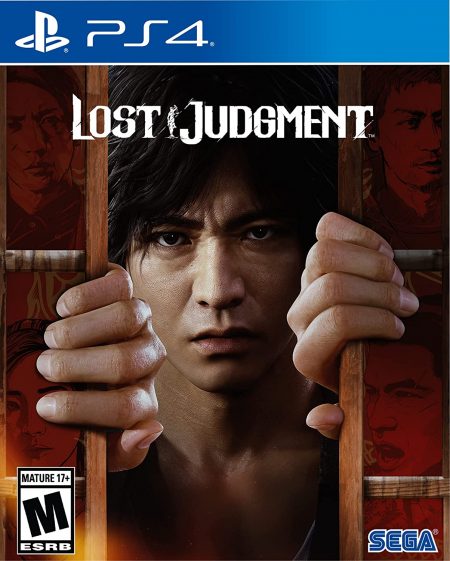
Game Details
System: Available on PS4, PS5, Xbox One and Xbox Series X. My review was made using a PS4 Slim.
Playstyle: I completed the game in about 60 hours. I played the main story, the School Stories and most substories. But I didn’t go too far out of my way for side content or minigames unrelated to those. I played on Normal difficulty.
ESRB Rating: M for Mature 17+ (blood, intense violence, partial nudity, sexual themes, strong language and use of alcohol)
In a hurry? Here’s the gist: The Judgment series returns with a second entry even better than the first. Yagami and his companions must navigate a twisting conspiracy of murder and intrigue while also giving help and guidance to the next generation. While the gameplay occasionally feels bloated with features that don’t get the time to really shine and the quality of side missions is inconsistent, the core gameplay loop is excellent, and shifts in the narrative’s tone feel significantly smoother than the previous installment.
Find a copy
Full review
The second entry in the Judgment subseries had a lot of expectations riding on it. With Yakuza: Like a Dragon moving the main franchise into a turn-based RPG (with mostly successful results), it’s fallen to the Judgment subseries to maintain the beat-em-up action gameplay of Yakuza 0-6 going forward. Lost Judgment, I’m happy to say, does not disappoint.
Lost Judgment begins when returning protagonist, private detective Takayuki Yagami and his partner, Masaharu Kaito, are called to assist their friends’ new detective agency in Yokohama with a school bullying case. Naturally, this leads down a rabbit hole with far-reaching repercussions, as the heroes must navigate the line between the law and justice while uncovering a conspiracy that reaches across both sides of the law.
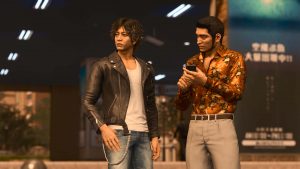
Takayuki Yagami and Masaharu Kaito confer about a case
As an important aside, this game deals heavily with some very difficult subject matter. Such things are generally handled pretty well, in my opinion, but the material can be distressing. Depending on your experiences, it’s probably best to allow yourself breaks from the main story as needed and be aware of the content warnings added in the game’s day-one patch.
A major appeal of the Yakuza franchise has always been its sense of place. Mainline installments have focused on various fictitious neighborhoods based on real ones, with recurring settings like Kamurocho and Sotenbori changing before fans’ eyes as trends and establishments come and go. Lost Judgment focuses firmly on two returning areas: Kamurocho and Like A Dragon’s Isezaki Ijincho. Fans of that game can expect to encounter some returning characters and locations and many new ones, most notably the posh private high school that serves as the catalyst for the game’s main plot and much of its side content.
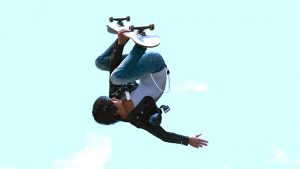
Yagami does tricks on a skateboard to impress young people.
On which note, side content is always an important part of the experience of a Yakuza game. In my opinion, side content was probably the weakest part of the previous Judgment installment, with the traditionally lighthearted side content and the more serious main plot feeling more like a tonal disconnect there, rather than tension-breaking breathing room. I’m happy to report that the side content in Lost Judgment is back to that strength, with some caveats. A significant amount of the side content is under the umbrella of the “School Stories,” a storyline wherein the protagonist acts as an advisor to various clubs at the high school and helps the young people with their problems along the way in an attempt to foil a rising crime boss taking advantage of students. This gives a great excuse to work in new gameplay styles for particular club activities, like a rhythm minigame for the dance club or a well-developed boxing game. Some of these work really well, others less so. But overall the School Stories umbrella helps the side content feel like a natural part of the protagonist’s life, with its own tone and narrative, rather than the jarring tonal separation in the previous installment. In terms of mood, the School Stories occupy a middle ground between the heavy main plot and the other lighthearted side quests. Those mostly consist of Yagami taking smaller cases, often with an amusing premise or conclusion.
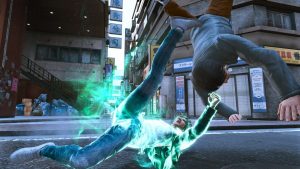
Snake style allows Yagami to use even the strongest enemy’s power against them.
Combat is mostly tight, though there’s a bit of system bloat. Your character can switch between 3 fighting styles: Crane, a fast, kick-based style meant for fighting off large numbers of enemies with sweeping blows; Tiger, a style meant for a single, isolated target and delivering massive damage through thrusting punches and spin kicks; and Snake, an elusive style with various blocks, dodges, counters and grapples. Each style can be leveled up individually with new moves, special modifiers and bonuses when in EX Boost mode—an empowered stance that drains the special move gauge.
Unfortunately, I felt like combat faltered in a few different ways. Most fights were not difficult enough to bother using the EX Boost, and when I did use it, EX Boost wasn’t activate long enough to help me in boss fights. Also, once I started upgrading combat abilities and getting the hang of the Snake style, Crane felt pretty useless. Snake’s defensive tricks work great against groups, and with smart positioning, it was usually easy enough to isolate an enemy from a large group and eliminate them almost immediately with Tiger, rather than spreading the damage out among multiple enemies without actually removing them from the fight. I say all this with the understanding that my issues may be eliminated on harder difficulty modes.
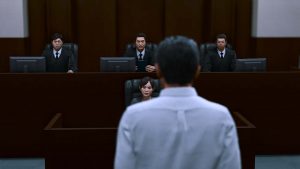
Lost Judgment features thrilling legal drama at the heart of the mystery.
However, the bloat carries throughout the game and is one of my biggest overall negatives. It’s not uncommon for this series to have some novel mechanics that get used once or twice for a special scenario or minigame, but in this game, it feels unpolished. Particularly because these mechanics seem like they’ll be pretty useful throughout, but are not.
For instance, the parkour mechanic has multiple upgrades but is limited to a few non-repeatable segments that aren’t particularly challenging or dramatic. It would’ve been neat to use this in exploration or in a School Story. A rock-climbing club like Iwakakeru would have been a great addition, but the mechanic and its associated level-ups could be removed, and nothing of value would be lost.
There’s also a system for brewing alchemical concoctions to temporarily boost your combat abilities, but you can carry so few of them and are so well equipped with special moves and healing items that it’s easy enough to forget about them in the heat of battle. Other players I’ve spoken with who’ve played on unlockable higher difficulties report that they’re more useful, but if Normal is the intended baseline experience, it feels like a missed opportunity to streamline or do something more with the brewing mechanic.
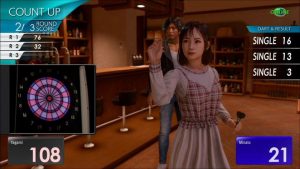
The DLC girlfriends are great but should have been in the base game.
Unfortunately, I also have to call out some DLC practices, which factor into this a little. The base game includes a Girlfriend mechanic, where Yagami can meet and woo a casual date. When you complete that girlfriend’s storyline, you gain certain benefits in combat when you’re near her hangout area. For such an in-depth mechanic that plays directly into the franchise’s traditional strengths of character interaction and development, it surprisingly appears only once in the base game. You can buy a $10 DLC that adds three additional girlfriends, which matches the number from the previous game, but that still feels limited considering Lost Judgment’s larger scale. The Yakuza franchise is fairly new to this kind of DLC, and the rest which has already been released does feel like an add-on, but this particular instance absolutely feels like artificially cut content to sell DLC. Hopefully, this is an isolated misstep and won’t become a regular thing going forward.
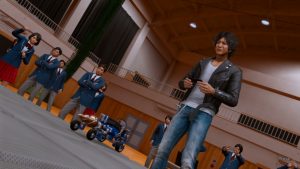
The Robotics Club has a great premise but a frustrating execution.
Unexpectedly, it’s one of the School Stories that I feel is the weakest part of the game and drags the entire experience down: the Robotics Club. It’s an interesting idea, a robot fighting tactical minigame and a story about the values of different leadership styles. But the game is poorly explained, there are massive difficulty spikes without warning and there’s no real tie-in to the rest of the game. Also, upgrade materials require either significant periods of grinding (grinding is video game jargon that means killing the same set of opponents over and over in order to gain something) or spending vast sums of money at merchants. Late stages rely more on luck and abusing shortcomings of the game mechanics rather than skill at playing “as intended.” It’s a massive time and resource sink for a game that is otherwise very respectful of the player’s time, and with so many of the School Stories being a little short, it feels like frustrating filler. What is by far the worst club, is also likely to be the longest to complete. This section of the game killed my motivation to play a game I was otherwise loving. In a worse game, I’d have just skipped it, but my enjoyment of the other School Stories kept me going, to see the content unlocked by clearing all of them.
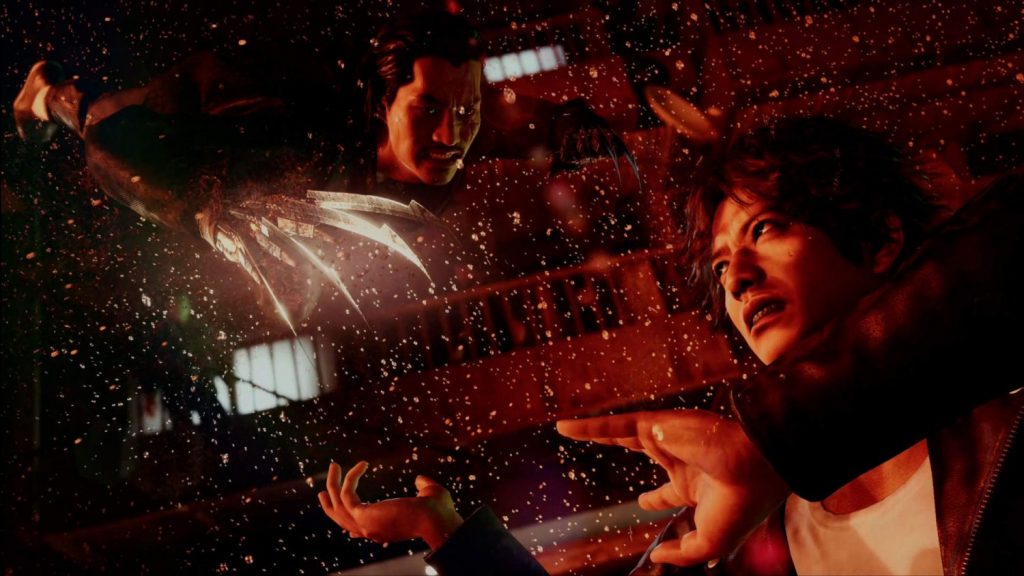
Cinematic action punctuates the heroes’ investigation at almost every turn.
FINAL THOUGHTS
Overall, Lost Judgment is an excellent installment in both the larger Yakuza franchise and the Judgment subseries. The main plot is compelling, and there’s plenty of side content to experience the game’s world. Combat feels great from moment to moment, even if the Normal difficulty trends on the easy side for series veterans. A few unnecessary systems and uneven difficulty in side content bog things down, but they don’t ruin the overall experience.
If you’re concerned about continuity, there are some spoilers regarding the state of the world following Yakuza: Like A Dragon, as well as some references to the first Judgment. I’d definitely suggest playing Judgment before Lost Judgment, but it stands on its own well enough if that’s your preference. Overall, I give the game a high recommendation. If I’ve piqued your interest, check it out, or the first Judgment to get caught up!
